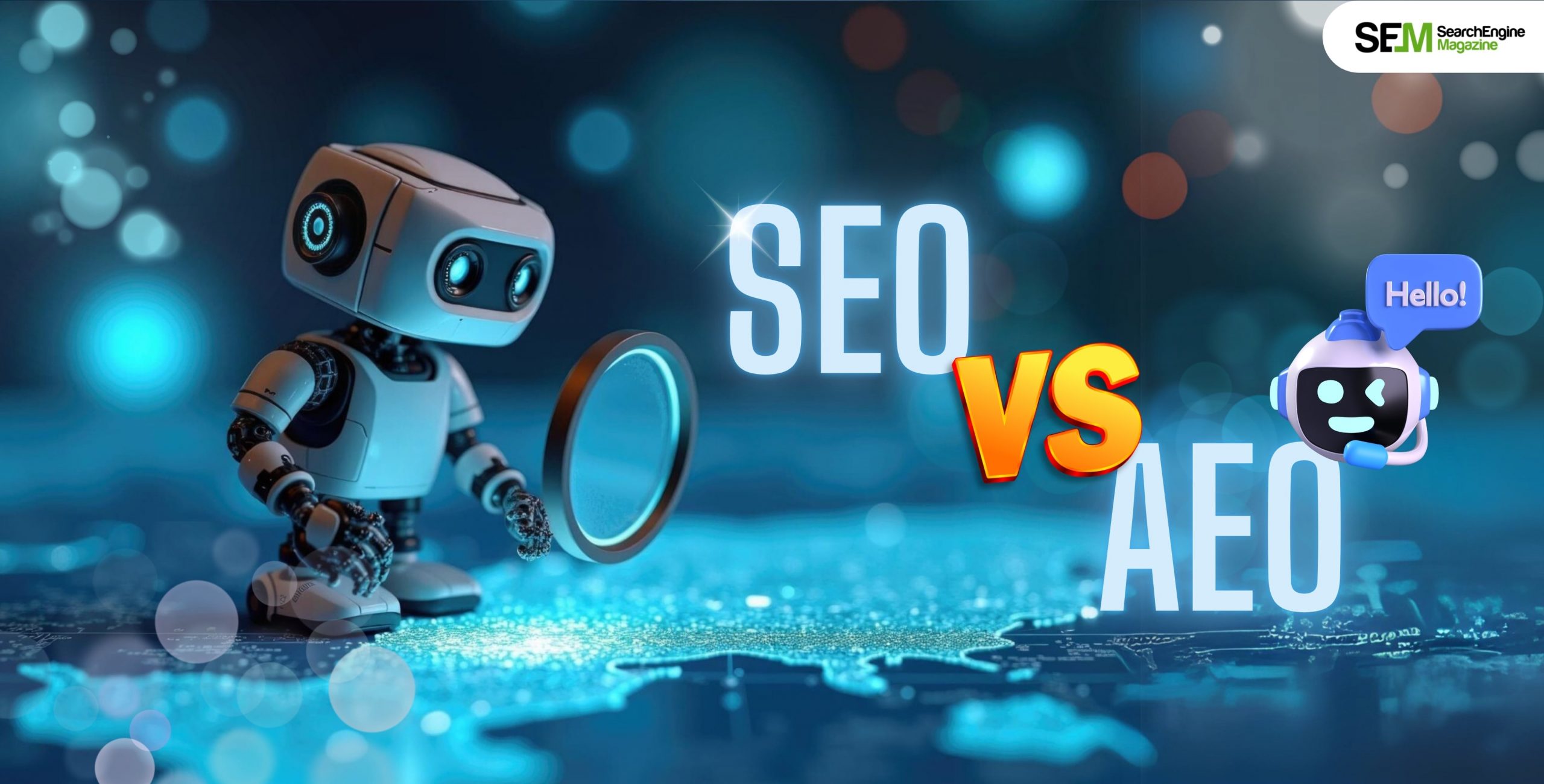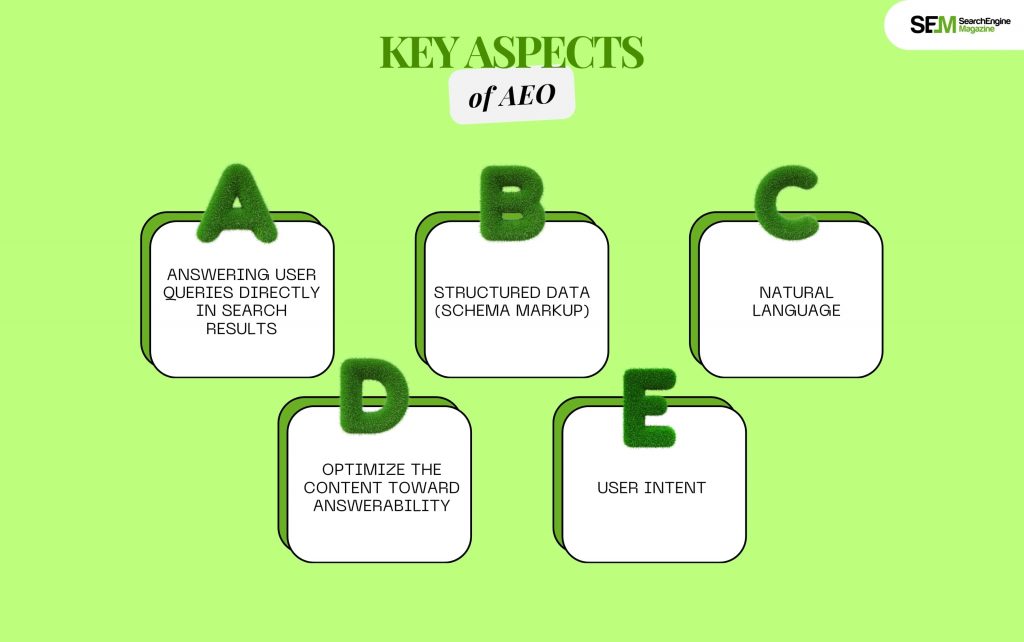How Data-Driven Hiring Reduces Costs and Improves Workforce Efficiency
Mar 29, 2025

Mar 29, 2025

Mar 29, 2025

Mar 29, 2025

Mar 29, 2025

Mar 29, 2025

Mar 27, 2025

Mar 27, 2025

Mar 25, 2025
Sorry, but nothing matched your search "". Please try again with some different keywords.


Search Engine Optimization, or SEO for short, has been at the heart of organic traffic generation to websites for nearly two decades. Yet, with search engine technology advancements, a new paradigm is slowly being unearthed: Answer Engine Optimization, or AEO. Many also refer to this as Generative engine optimization or GEO.
There are plenty of similarities between SEO vs AEO, but fundamentally their approaches towards optimizing content in search engines are quite a departure. To keep up with the game, marketing agencies need to understand these differences and adapt quickly to the changing tides of search.
In this extensive article, we will outline the main differences between SEO and AEO, the factors driving this shift, and how businesses can adjust their digital marketing strategies to harness the power of both fully. By the end, you will be well-informed on SEO vs AEO, their respective roles, and how to get the best out of both together.
Search engines have evolved quite a way since the early days of Google. From a simple algorithm ranking pages based on keywords in its early days, Google has evolved into a sophisticated system.
It involves artificial intelligence, natural language processing, and machine learning to understand user intent and arrive at immediate answers. The result of this recent change has given birth to a new search model: Answer Engine Optimization (AEO).
Traditional SEO is still a great way of boosting visibility on search engine result pages. But, with the trends increasingly focusing on instant answers of direct complexity, AEOs grew in popularity.
Search Engine Optimization (SEO) is the optimization of the visibility and presence of a website or web page on a search engine’s SERPs. Here, SEO aims at attracting organic (unpaid) traffic through various elements of website optimization to meet the criteria set by the search engine algorithms.

Since we are talking about SEO (Search Engine Optimization) here are a few key aspects or features of this optimization so, let’s check out what they are.
SEO starts with identifying the relevant keywords for users. This involves understanding the search volume, user intent, and competition for specific terms.
This includes optimizing individual pages by incorporating target keywords into various on-page elements such as the page title, meta descriptions, headers, URL structure, and internal linking.
These activities improve the authority and trustworthiness of the website, including link building, social media promotion, and guest blogging.
This focuses on most activities related to the backend aspects of a website, including improving page speed, ensuring mobile optimization, creating a site map, fixing broken links, and establishing accessibility to crawlers by search engines.
Remember that content is at the heart of SEO. The better the content’s quality, information value, and relevance, the better it will rank. The more informative and engaging the content, the better the chances of receiving links and social signals.
Now, with the rise in the importance of UX, search engines, including Google, have started considering factors like page load speed, mobile-friendliness, navigation, etc., to decide rankings for content.
While SEO remains the most important strategy for increasing visibility and organic traffic, search engines are shifting in ways that need a new approach — which brings AEO to the fray.
Answer Engine Optimization is a more recent evolution that aims at optimizing content for “answer engines,” or search engines that focus on giving users direct, immediate answers to their search questions. In contrast to traditional SEO, which focuses on ranking web pages, AEO aims to supply precise answers directly on the SERP.
With the integration of machine learning and NLP into search engines such as Google, Bing, and many more, the landscape of a search has shifted from simple keyword matching to user intent. AEO focuses mainly on fine-tuning the optimization of the content for immediate answers.

Since we are talking about AEO (Answer Engine Optimization) here are a few key aspects or features of this optimization so, let’s check out what they are.
AEO is based on answering the user’s query directly in search results. This encompasses featured snippets, knowledge panels, and instant answers.
AEO heavily depends on structured data. It enables the search engine to understand the context of the content. Writing markup for your content with schema, such as FAQ schema and how-to schema, enables the extraction of accurate information by search engines from your content.
AEO emphasizes that natural language and conversational queries are important. People will ask their voice searches in more of a conversational tone when they know others use it (e.g. “What are the best laptops for gaming?” not just “gaming laptops”).
AEO demands that the content be arranged so that it becomes easy for search engines to draw out adequate information. Usually, this means bullet points, numeric lists, and Q&A formats.
AEO is more than keywords. It involves knowing the intent behind the need of the person asking the question. The new search engines have moved toward answering specific questions directly, even if the question that needs to be answered isn’t framed in the form of a query.
AI and NLP: Search engines apply artificial intelligence and natural language processing techniques to understand the intent or context surrounding search queries. Where search engines previously focused solely on keyword matching, they now attempt to understand the user’s question and provide the best possible and most accurate response.
This content frequently appears in rich snippets (position zero), knowledge panels, and “People Also Ask” boxes on SERPs. It delivers answers directly without needing a user to click through to a website.
As voice and mobile search become more popular, AEO will continue to be increasingly important in providing users with exactly what they are looking for-instantly and efficiently.

While SEO and AEO aim to improve visibility on search engines, they have distinct approaches and goals. Let’s compare them based on several key factors:
| Aspect | AEO | SEO |
| Primary Objectives | Provides direct answers to user queries | Drives traffic to websites by ranking higher in search results |
| Content Focus | Short, concise, answer-focused content | Detailed, comprehensive content for deeper information |
| Search Interactions | Zero-click searches (answers shown directly on search) | Click-through searches (user visits a website for more details) |
| Query Intent | Answers specific, direct questions (e.g., “what is AEO”) | Broad intent, including informational, transactional, etc. |
| Device Targeted | Primarily for voice and AI – powered devices | Mainly for desktop and mobile web browsers |
| Technical Elements | Structured data, schema markup for better answer accuracy. | Standard on-page SEO elements like title tags, meta descriptions. |
| User Experiences | Quick, on-the-spot information delivery | Encourages deeper browsing, discovery, and engagement. |
| Examples | Voice assistants (Siri, Alexa) Google Featured Snippets | Traditional search engine results on Google, Bing, etc. |
| KPIs | Visibility in featured snippets, answer accuracy | Organic traffic, click-through rate keyword rankings |
While SEO is concentrated on optimizing for higher rankings in SERPs and attracting traffic through broader optimization techniques, AEO focuses on delivering instant, relevant answers to user queries. It might represent an equally essential part of the modern search landscape but requires different strategies.

The traditional SEO model of ranking web pages isn’t enough anymore. Here’s why:
Also, as the amount of voice search, mobile search, and AI-based features like Siri, Alexa, or Google Assistant grows, more people tend not to click through from the several search results appearing on page one but want an instant answer. Even better, the answer should come out in a conversational dialogue.
The effect on search results like featured snippets, knowledge panels, and other answer-based features is now at the front of organic listings. Frequently found above organic results (position zero), this new alteration of traditional search optimization measures may make it less effective for users whose question is answered at the end of the process.
Search engines are shifting focus from keywords to understanding user intent. AEO optimizes the user’s question, making it possible to rank for a keyword and the exact answer the user is looking for.
With more people using voice search on mobile and home assistant devices, the need for AEO is increasing. Voice queries are typically longer, more conversational, and question-based, requiring a different optimization approach than traditional SEO.
To optimize for SEO, you’ll need to focus on several key areas:
To optimize for AEO, consider the following strategies:

Here you can check out a few examples of AEO vs SEO practices used in the real-world. With these examples you can see how these strategies are used in the real world to improve your site health and ultimately your business.
As search engines grow, digital marketing strategies will contain the best SEO and AEO techniques. Businesses need to optimize the traditional SEO technique while preparing their content for easy extraction as a direct answer to the specific user query.
Only then can a hybrid approach, combining elements of SEO vs AEO, ensure websites remain visible in the SERPs, thereby allowing them to capture the growing demand for instant, relevant answers.
SEO vs AEO are not mutually exclusive; they are complementary techniques that play different but equally imperative roles in modern digital marketing.
Since the role of search engines is evolving and instant answers characterize user behavior, businesses must use both techniques as this is the only way to maintain a competitive level.
Through optimizing websites for both SEO to attract organic traffic and AEO to answer direct questions for users, marketers can ensure that their websites perform well in the continuously changing search ecosystem.
In the future, those businesses that combine SEO and AEO will be able to respond best to what searchers want now: content relevant and structured enough to answer the question directly while ranking nicely in more traditional SERPs. By witnessing these changes and focusing on SEO and AEO, marketers can prepare themselves for long-term online success.
You May Like To Read This:
Nabamita Sinha loves to write about lifestyle and pop-culture. In her free time, she loves to watch movies and TV series and experiment with food. Her favorite niche topics are fashion, lifestyle, travel, and gossip content. Her style of writing is creative and quirky.
View all Posts
How Data-Driven Hiring Reduces Costs and Impr...
Mar 29, 2025
Why Headless CMS Works Well for EdTech Startu...
Mar 29, 2025
Building Topical Authority to Excel in Search...
Mar 29, 2025
The Impact of Professional Recruitment Servic...
Mar 29, 2025
The 13 BEST Quillbot Alternatives In The Mark...
Mar 29, 2025

